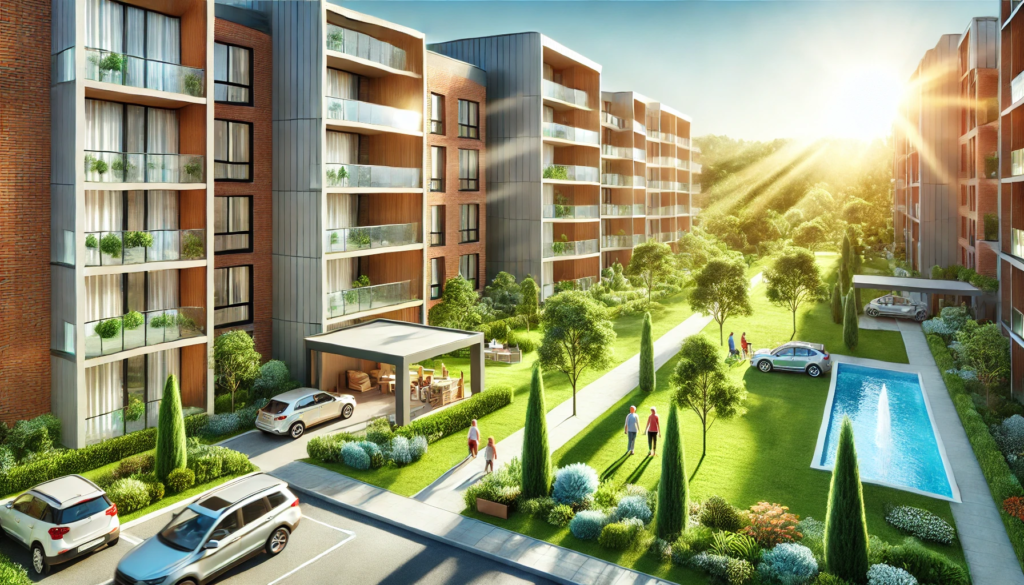
A ready possession home is one that is fully constructed and available for immediate occupancy. These properties are a popular choice among homebuyers for various reasons.
Pros of Ready-to-Move Homes
- Immediate Possession
The most significant advantage is that you can move in right away. This is especially beneficial for those currently paying rent or looking to settle down quickly. - What You See Is What You Get
Unlike under-construction properties, there’s no ambiguity about the layout, quality of construction, or amenities. You can physically inspect the home before making a decision. - No Construction Delays
With ready to move properties, the risks associated with project delays or stalled construction are eliminated. You’re purchasing a finished product. - Ideal for Investors
If you’re buying a property as an investment, you can immediately start generating rental income with a ready-to-move property. - Tax Benefits
Home loans on ready possession properties offer tax benefits under Section 24(b) for interest repayment, which is not available for under-construction properties until possession is granted.
Cons of Ready-to-Move Homes
- Higher Cost
Ready to Move homes are generally more expensive than under-construction properties due to their immediate availability. - Limited Customization
Since the property is already built, you have little to no say in the design, layout, or interior finishes. - Resale Properties Might Need Repairs
In some cases, ready-to-move homes are resale properties, which might require repairs or renovations before moving in.
Under-Construction Properties: A Budget-Friendly Alternative
Under-construction properties are those still being built and will be handed over at a future date. These properties are attractive for buyers seeking affordability and flexibility.
Pros of Under-Construction Properties.
- Lower Initial Cost
These properties are typically more affordable than RTM homes, allowing buyers to secure larger or better-located properties within their budget. - Flexibility in Payment
Builders often offer construction-linked payment plans, easing the financial burden over time. - Customization Options
Buyers often have the opportunity to customize certain aspects of the property, such as layouts or finishes, during the construction phase. - Appreciation Potential
If you purchase early in the construction cycle, there’s a good chance the property’s value will appreciate by the time it’s ready.
Cons of Under-Construction Properties
- Possession Delays
Delays in project completion are common, leaving buyers waiting longer than expected to move in. - Risk of Project Stalling
There’s always the risk of the developer facing financial or legal issues, which could stall or even halt the project. - Hidden Costs
Buyers may face additional charges for amenities, registration, or legal documentation that weren’t initially disclosed. - Uncertainty
Since the property isn’t complete, buyers rely on brochures or virtual models, which might differ from the final product.
Ready-to-Move vs. Under-Construction: Key Factors to Consider
Here are some essential aspects to keep in mind when choosing between ready-to-move and under-construction properties:
- Timeline
- If you need a home immediately, ready possession homes are the way to go.
- If you have time to wait, under-construction properties might be worth considering for the cost savings.
- Budget
- RTM homes are pricier but come with peace of mind.
- Under-construction properties can save you money but may involve risks.
- Risk Tolerance
- Risk-averse buyers should stick to ready-to-move homes.
- Those willing to take calculated risks may find better returns with under-construction properties.
- Purpose
- For personal use, RTM homes offer immediate benefits.
- For investment, under-construction properties may provide better appreciation over time.
Conclusion: Which One Is Right for You?
Choosing between ready-to-move homes and under-construction properties depends on your priorities. Ready-to-move homes offer convenience, certainty, and immediate returns but at a higher cost. On the other hand, under-construction properties provide affordability and potential appreciation but come with risks of delays and uncertainties.
Evaluate your financial situation, risk appetite, and long-term goals before making a decision. Whether you choose the comfort of a ready possession property or the affordability of an under-construction property, ensure that your choice aligns with your lifestyle and investment objectives.
What’s your preference—ready-to-move or under-construction? Let us know in the comments!
